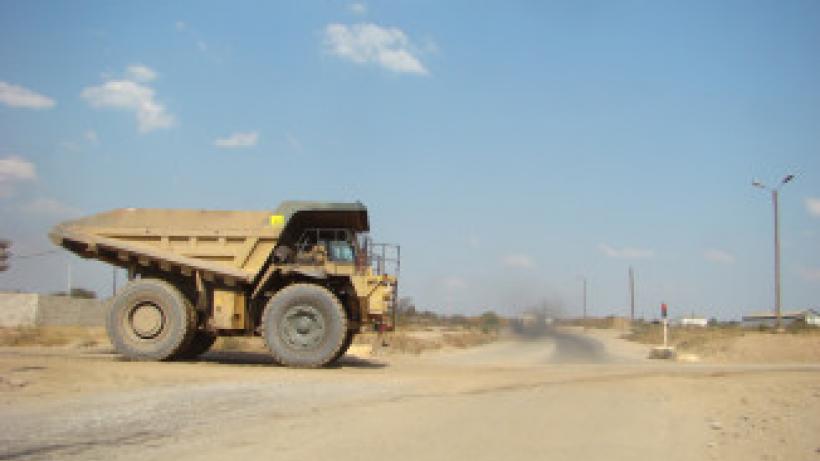
Can Zambia escape the clutches of the resource curse?
Zambia has made slow but steady progress in building its industrial capabilities. But a major push is needed if the manufacturing sector is to help lessen the country’s dependence on exports of copper and reduce poverty and unemployment.
This may prove a challenge given that Zambia’s economy has been driven by copper mining. Economies that are dominated by mineral resources have found it difficult to develop manufacturing. Compounding Zambia’s problem is that it is landlocked, making connections to export markets that much more difficult.
Zambia’s economy grew at an average of 7.76% between 2004 and 2013, faster than the 5% average for sub-Saharan Africa. Despite the high growth rates, the country has not achieved its ambition of diversifying its economy and reducing poverty.
This failure is explained by exports of copper mining having been the biggest driver of the growth.
Green shoots in manufacturing
Mining has spurred urbanisation and rising incomes, which have boosted consumption and demand for processed agricultural products. It has also driven the growth of associated industries such as construction, information communication technologies and retail.
Between 2008 and 2013, Zambia’s non-traditional exports grew threefold. A small but growing portion of these represents the growing capabilities and competitiveness of the manufacturing sector.
Most of the non-traditional exports are targeted at southern African markets. Apart from semi-finished copper products, value-added products include cement, animal fodder, milling products, essential oils, and iron and steel products. The number of small and medium-sized firms involved in exporting to the region is also growing.
The manufacturing sector has made a positive contribution to Zambia’s employment and investment. Job creation in the sector has increased fourfold from 55,600 people in 2005 to 216,700 people in 2012.
For this reason, Zambia has prioritised industrial development and has recently approved an industrialisation and job creation strategy paper.
The low-hanging fruits can be found in the agro-processing sector. Food and beverages is the largest component of household consumption in Zambia as well as in the region.
The growth of the urban middle class is driving consumption of processed foods and beverages. Given Zambia’s agricultural potential, this means the country has substantial opportunities for meeting demand in the region.
But it will only be able to take advantage of these opportunities if it invests in agro-processing. The study lists a lack of access to capital as one of the constraints to growth. The government is developing financing options. Among them is an empowerment commission which has developed a mechanism for investing in agro-processing.
There are also increasing levels of foreign and domestic investment in agricultural production – in particular, in soybean, wheat, poultry and sugar production. And Zambia is already a competitive exporter of vegetables and milling products.
Domestic urban and rural demand for processed foods is increasingly structured around supermarket retail chains. This requires a strategy to implement an effective supplier upgrading programme. Such a programme should take into account the procurement strategies of the retail chains as well as the characteristics of the suppliers.
Pricing of sugar hampers manufacturing sector
Zambia could be competitive in the sugar confectionery and other sugar-based products, animal fodder and broiler meat because it offers low-cost production.
But charging international prices to the domestic manufacturers hampers the growth of Zambian firms that use these raw materials.
Reducing transport costs to regional urban centres is also an important hurdle to clear. This could turn Zambia into the regional supply hub for animal fodder. This would enable it to meet a growing demand for inputs into the poultry industry.
The mining sector as a driver
The Zambian government’s industrial strategy has prioritised engineering products. The mining sector can open up a sizeable market for Zambian manufacturers. Local sourcing of equipment and other mining inputs is low. But the market for equipment and other mining inputs in the Democratic Republic of the Congo (DRC) copperbelt potentially enlarges the market that Zambian can use to develop economies of scale.
A good example is the re-conditioning of mining equipment. Already, re-exports of mining equipment to the DRC figure among Zambia’s top export products.
Tapping into South Africa’s competences
In designing its local content policy, Zambia should consider co-operation within the region. In particular, it should tap into South Africa’s capabilities and competences as southern Africa’s hub for mining-related capital equipment and services.
The region should also feature in a broader strategy for the engineering sector to increase sub-contracting opportunities and relax skills and capital constraints.
To advance its industrialisation agenda, three key issues deserve attention:
- To facilitate entry into mining and retail value chains by domestic firms government needs to improve access to credit. Working with buyers and suppliers it must introduce a national quality assurance system.
- The southern African region has become the largest destination for Zambia’s non-traditional exports. Free trade areas under COMESA and SADC are important, but Zambia must focus on regional industrial co-operation programmes that strengthen its position.
- Low levels of competition undermine downstream activities. This is a problem in the cement, sugar, and poultry industries. Industrial policy needs to ensure the competitive supply of raw materials and intermediate inputs to downstream activities.
Zambia’s industrialisation is increasingly gaining momentum on the back of renewed policy efforts and investment from domestic, regional and global players. In this context, it is particularly important for Zambia to focus on implementation. It must develop effective programmes for upgrading its manufacturing capabilities, adopt a regional perspective and deal with difficult competition issues.
This article has been reposted from The Conversation, Africa.

